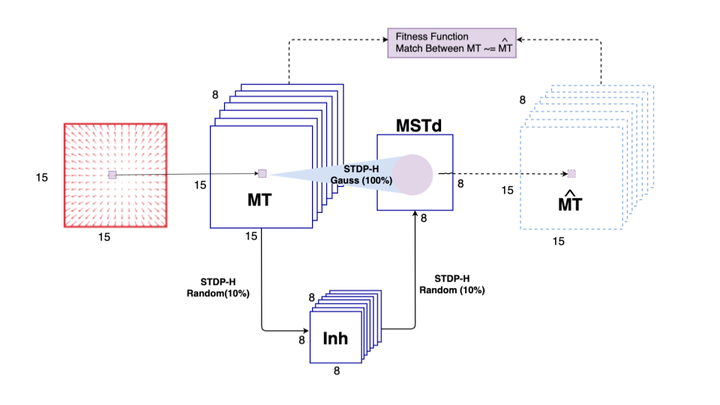Cortical Motion Perception Emerges from Dimensionality Reduction with Evolved Spike-Timing-Dependent Plasticity Rules

Abstract
The brain may use dimensionality reduction and sparse coding to efficiently represent stimuli under metabolic constraints. Neurons in monkey area MSTd respond to complex optic flow patterns resulting from self-motion. We developed a spiking neural network model that showed MSTd-like response properties can emerge from evolving spike-timing-dependent plasticity with STDP-H parameters of the connections between then middle temporal area and MSTd. Simulated MSTd neurons formed a sparse, reduced population code capable of encoding perceptual variables important for self-motion perception. This model demonstrates that complex neuronal responses observed in MSTd may emerge from efficient coding and suggests that neurobiological plasticity, like STDP-H, may contribute to reducing the dimensions of input stimuli and allowing spiking neurons to learn sparse representations.